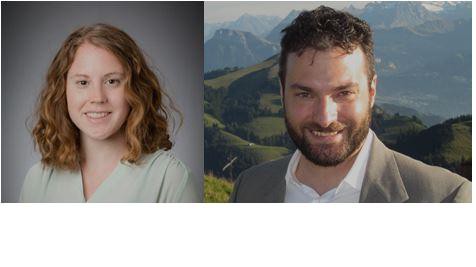Visits in RESSLab of Profs. Tracy Becker & Dimitrios Konstantinidis

© 2018 EPFL
May 28 2018, 10h45 - Room GC B2 424
Tracy Becker - Behavior of nonlinear isolated structures – experimental and numerical studies
Dimitrios Konstantinidis - Recent Advances on the Seismic Response of Unanchored Contents in Conventional and Base-Isolated Buildings
TRACY BECKER
While it is well known that isolators provide enhanced seismic performance to structures under design basis ground motions, excessive displacements in large earthquakes are a potential issue for the safety of the isolated superstructure. While codes have focused on designing typical non-isolated structures to ensure low likelihoods of collapse in extreme events, this is a critical missing piece for the design of isolated structures. For isolated structures, the design philosophy is different not only around the world, but also design-by-design. This talk will present an experimental study of friction pendulum bearings under extreme earthquake levels, in which impact, yielding, uplift, and in one case failure of the bearings was observed. The test data to validate bearing models that capture bearing failure and investigate the collapse behaviour of code-designed archetype buildings. Worryingly, braced-frame structures designed to North American code provisions, which are recognized to provide excellent performance under design-level earthquake hazards, have high probabilities of collapse under maximum considered earthquake levels primarily because of bearing or moat pounding. Further study understanding the effect of superstructure stiffness on impact susceptibility is discussed.
Bio: Tracy Becker is an assistant professor at McMaster University in Hamilton, Canada. She has expertise in the design, modeling, and experimental testing of high-performance structural systems. Her research group at McMaster focuses on expanding the use of seismic isolation to a broader category of structures, understanding ultimate failure mechanisms of isolated structures to ensure robust designs, and improving existing control systems to further minimize structural responses in seismic events. She received her BS in Structural Engineering from University of California, San Diego and her MS and PhD in Structural Engineering, Mechanics and Materials from University of California, Berkeley. After graduation she was a post-doctoral researcher at the Disaster Prevention Research Institute at Kyoto University.
DIMITRIOS KONSTANTINIDIS
During earthquakes, equipment and other building contents can shift, rock, or even overturn. Past earthquake reconnaissance reports have highlighted that the disruption and damage associated with unanchored components can severely affect the functionality of critical facilities such as hospitals. Excessive displacements and overturning of large contents can injure building occupants or block egress routes. Compared to the seismic response of structural components and systems, and even anchored nonstructural elements, there has been limited research over the years on unanchored contents. This presentation will provide an overview of recent experimental and analytical studies on the seismic response of unanchored building contents, conducted at McMaster University. The focus will be on shake table tests of medical equipment supported on wheels/casters and analytical studies on the response of sliding and rocking building contents. The presentation will explore base isolation as a seismic risk mitigation technique for unanchored building contents, demonstrating its broad effectiveness but also identifying particular scenarios in which base isolation results in response amplification.
Dimitrios Konstantinidis is an Associate Professor and the Chair in Effective Design of Structures in the Department of Civil Engineering at McMaster University. He received his Bachelor’s (1999), Master’s (2001), and Ph.D. (2008) from the University of California, Berkeley, and was a Postdoctoral Fellow at UC Berkeley and the Lawrence Berkeley National Laboratory before joining McMaster University in 2011. His primary research interests include the mechanics of rubber bearings; seismic isolation; nonstructural components; and the seismic resilience of hospitals, nuclear power plants, and other critical facilities. His work combines experimental testing, analytical methods, and numerical simulation for a wide range of purposes: gaining a deep understanding of behavior; providing an accurate characterization of response; proposing innovative seismic protection solutions; and providing recommendations for improved design codes and standards. He is a technical committee member and major contributor in codes and standards, including the Canadian Standards Association CSA S832 (Seismic Risk Reduction of Operational and Functional Components of Buildings) and CSA N289.1 (General Requirements for Seismic Design and Qualification of CANDU Nuclear Power Plants).